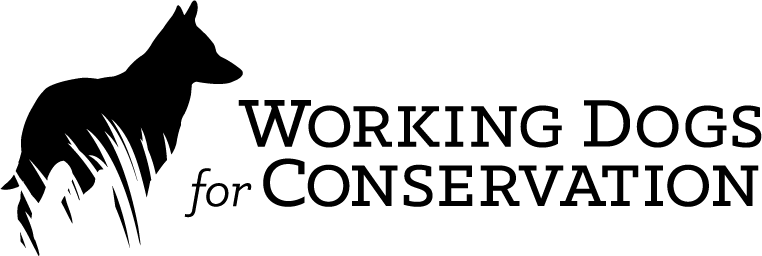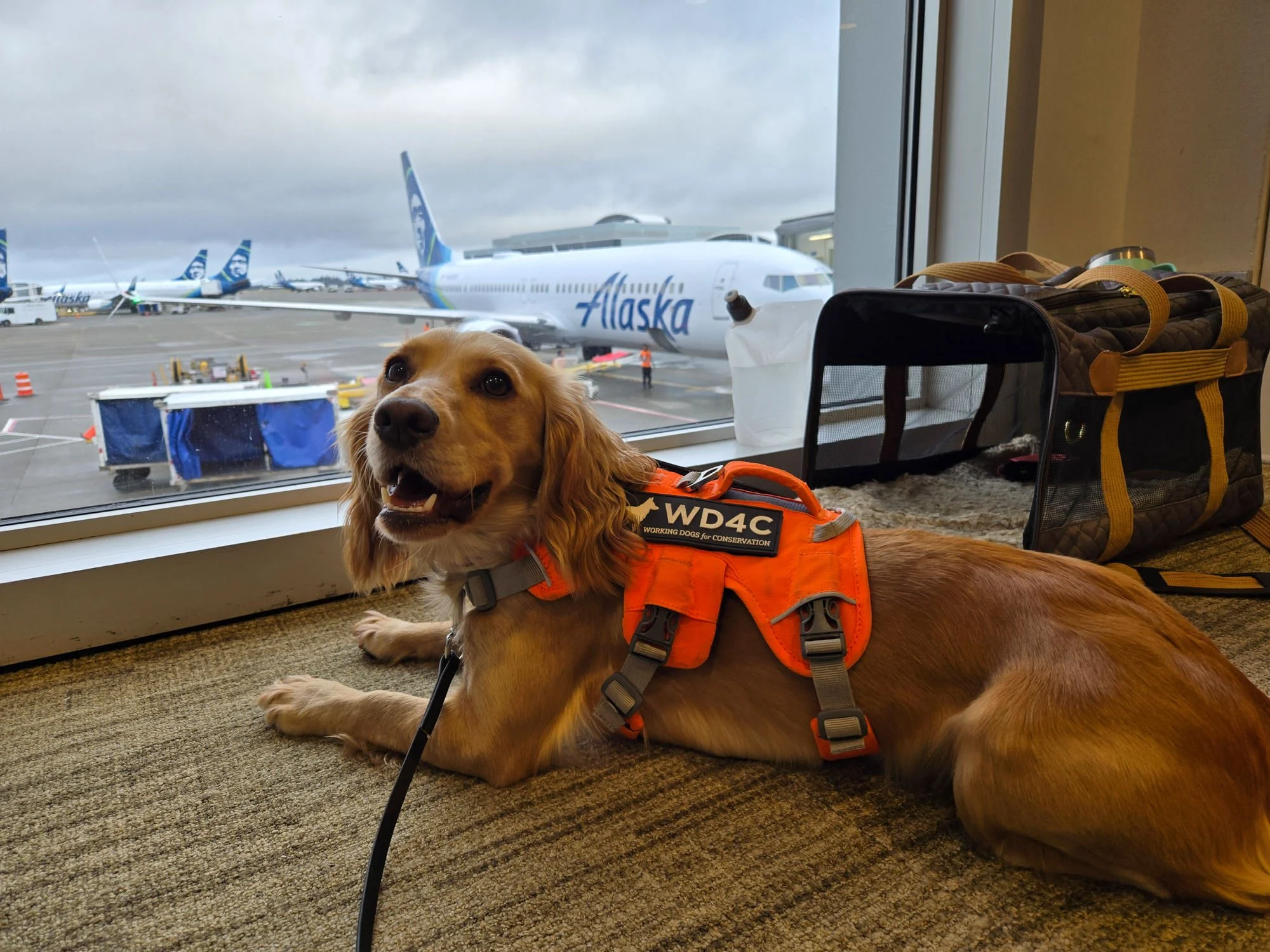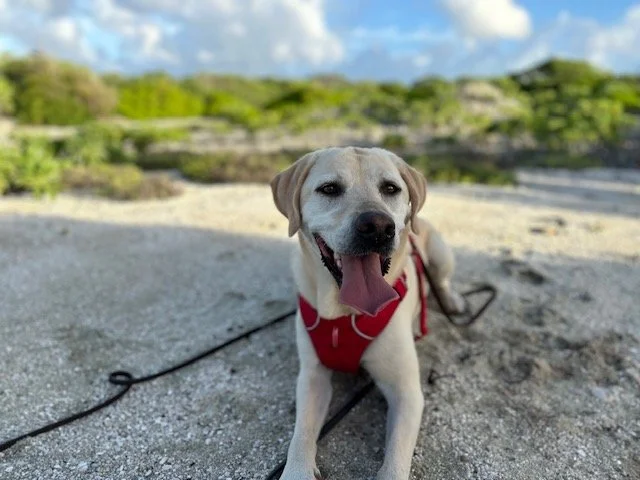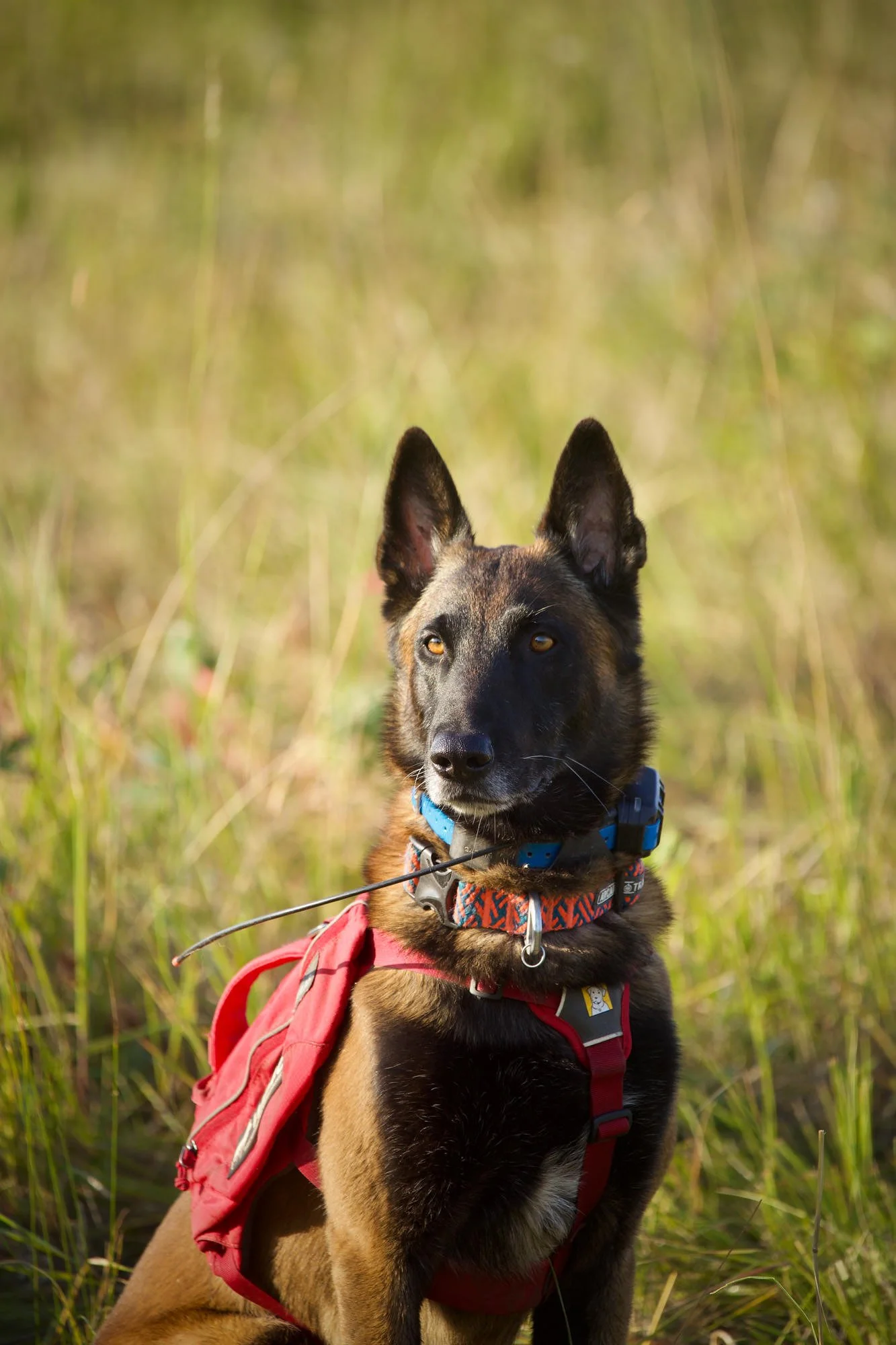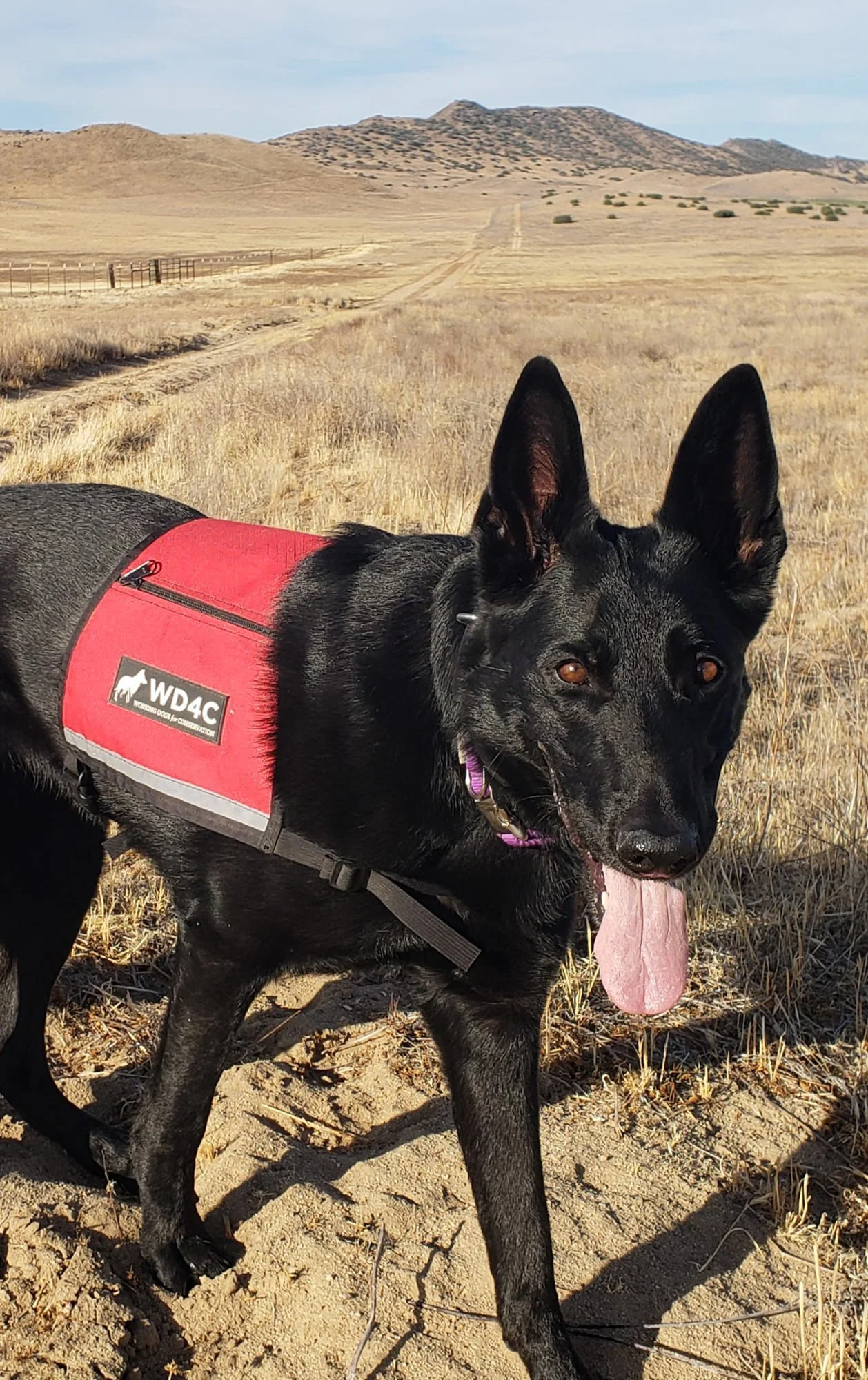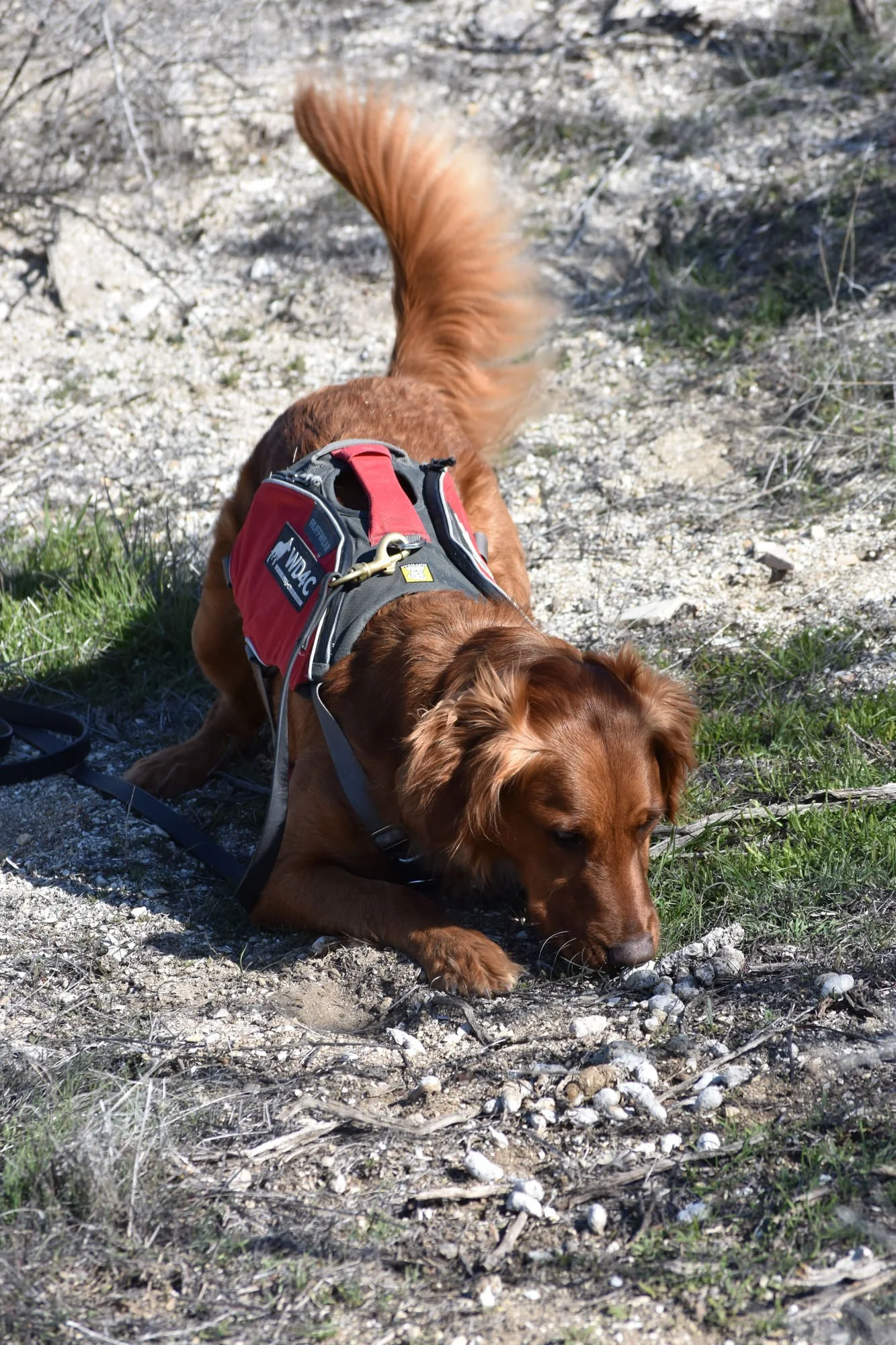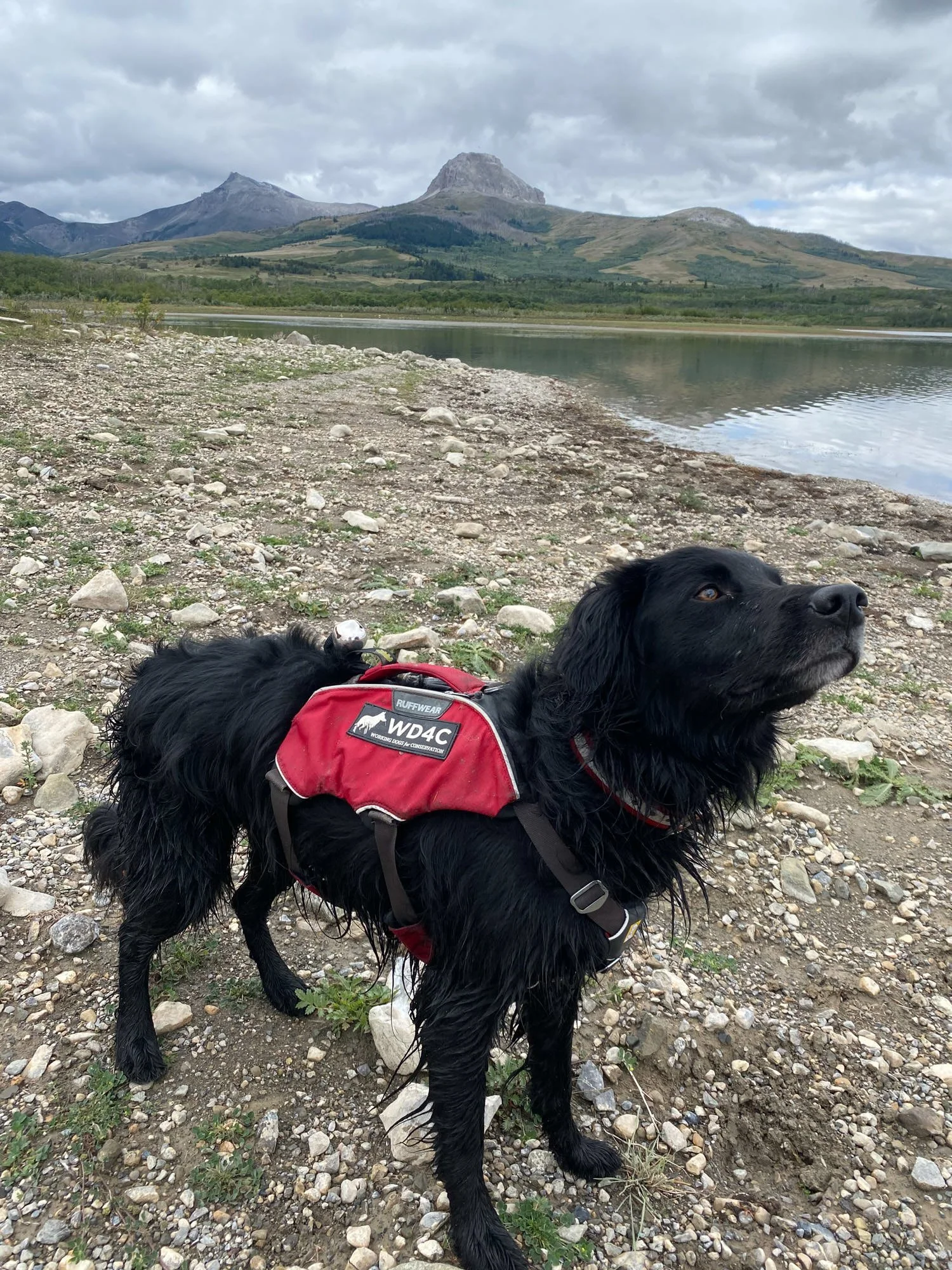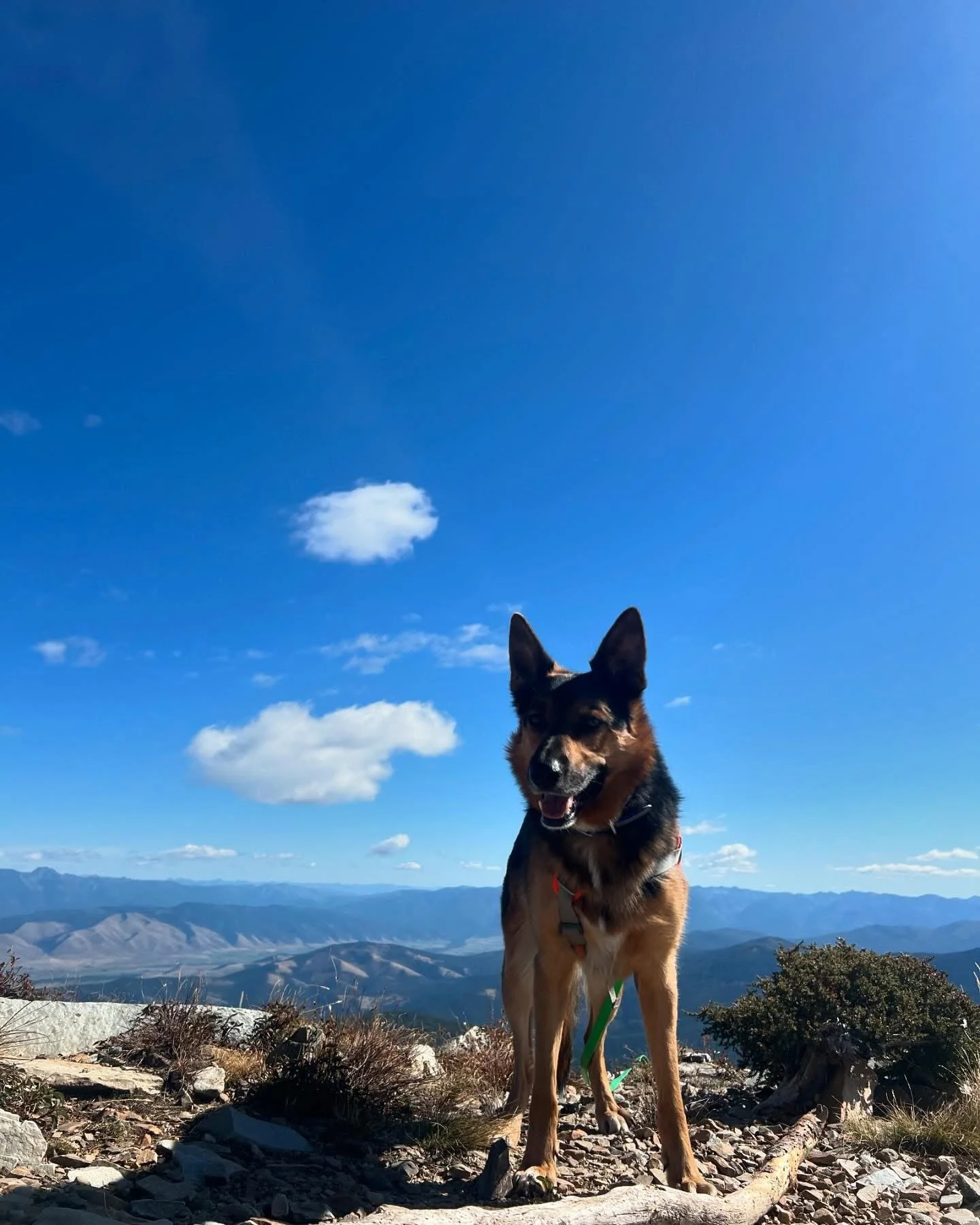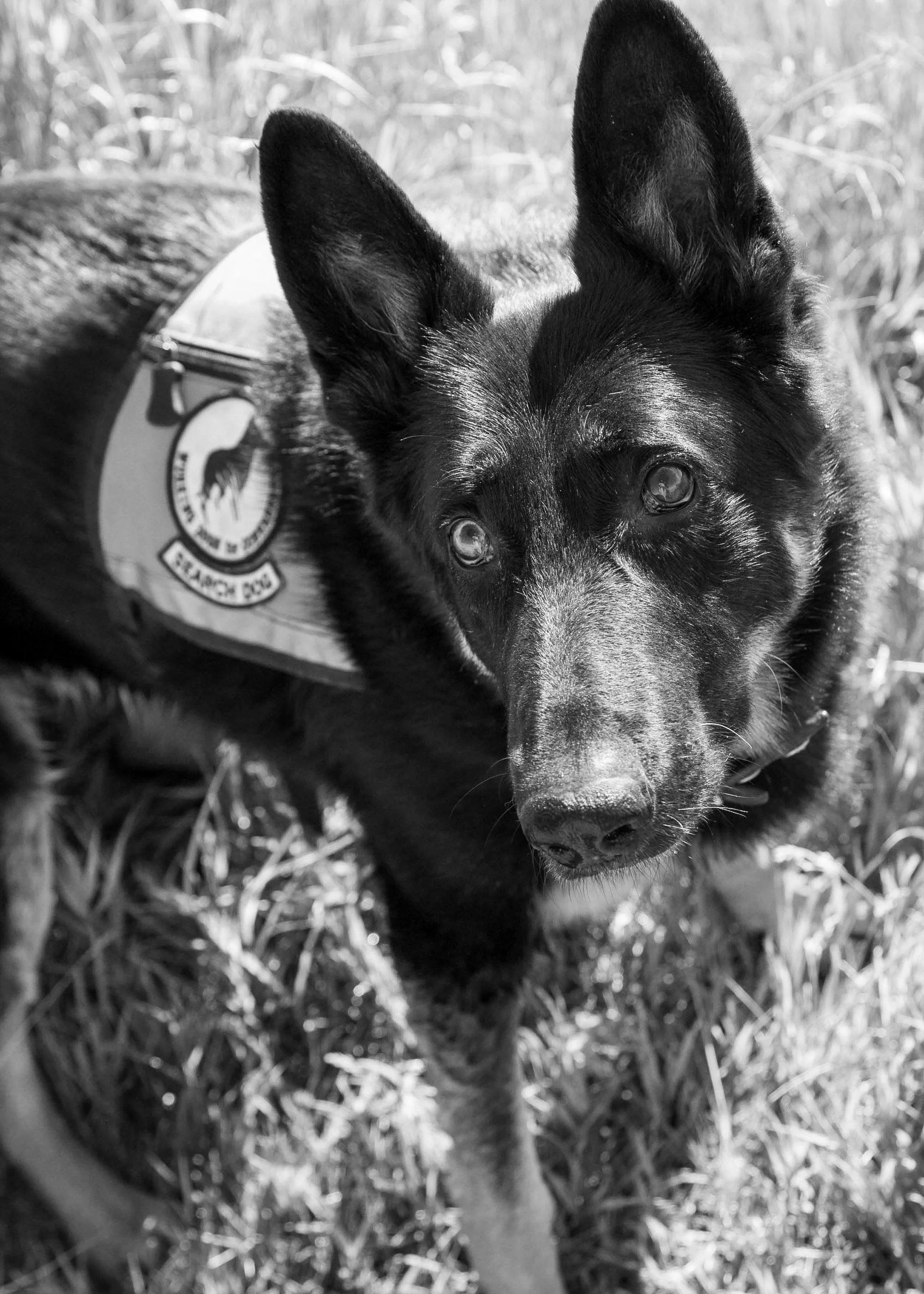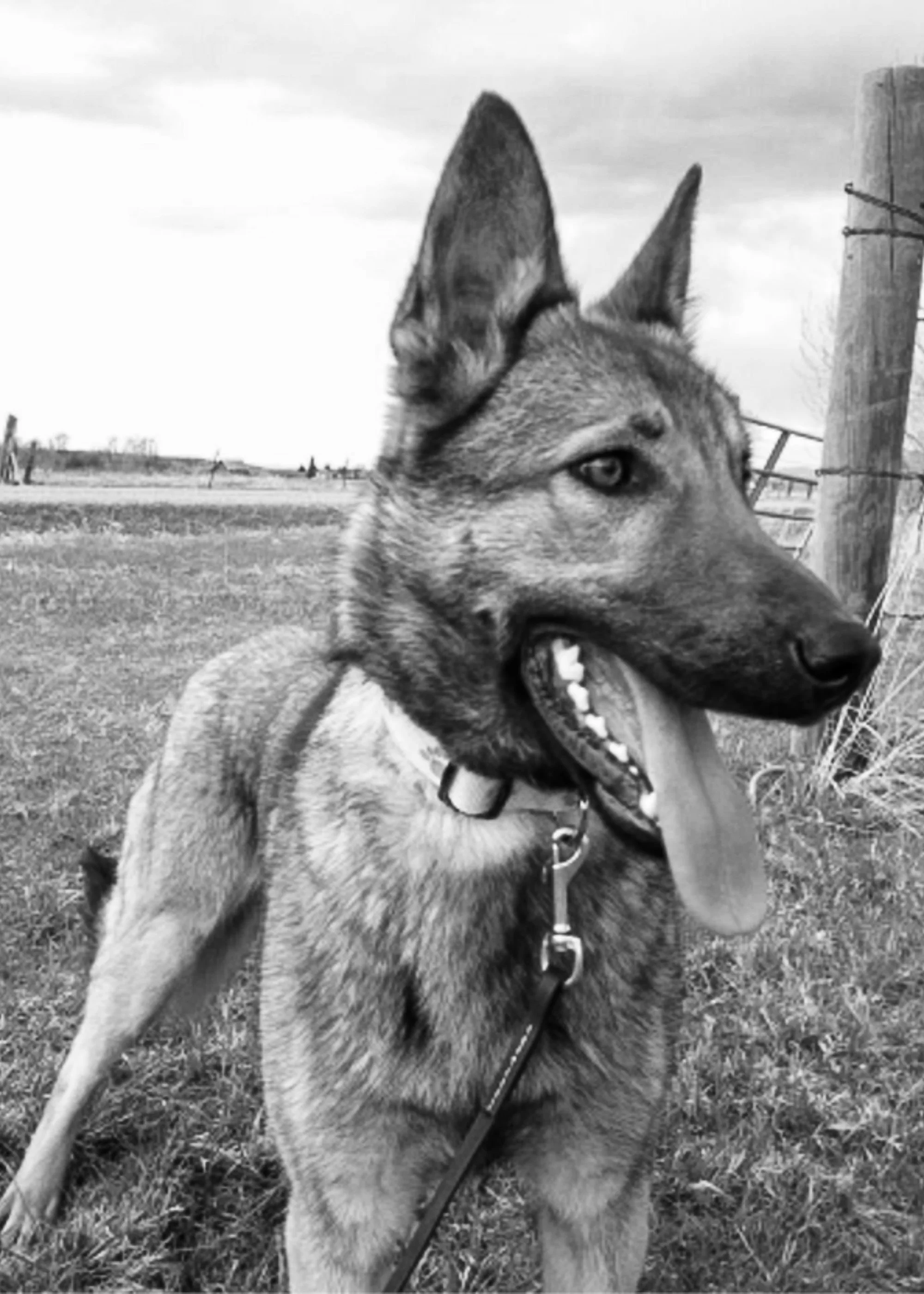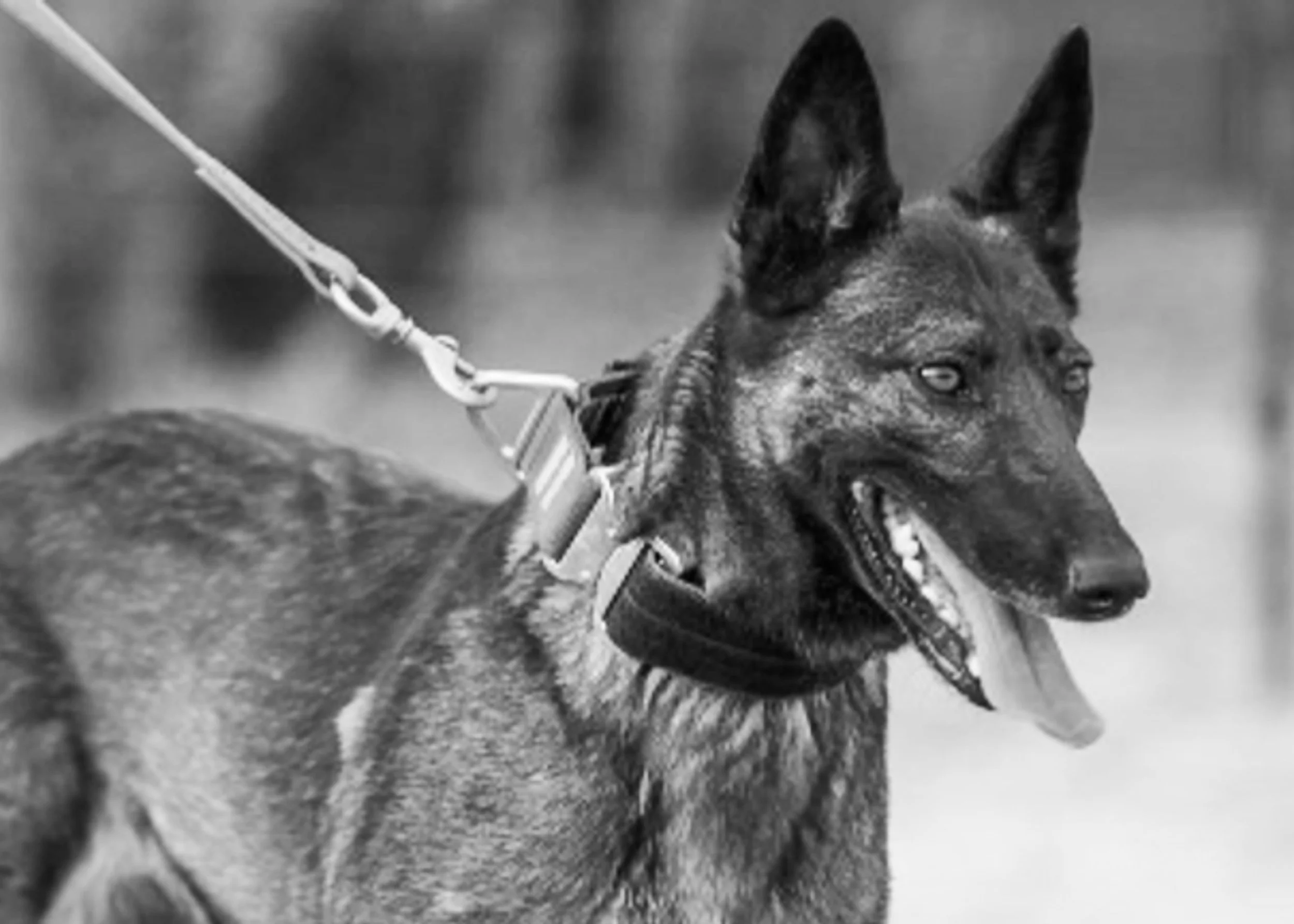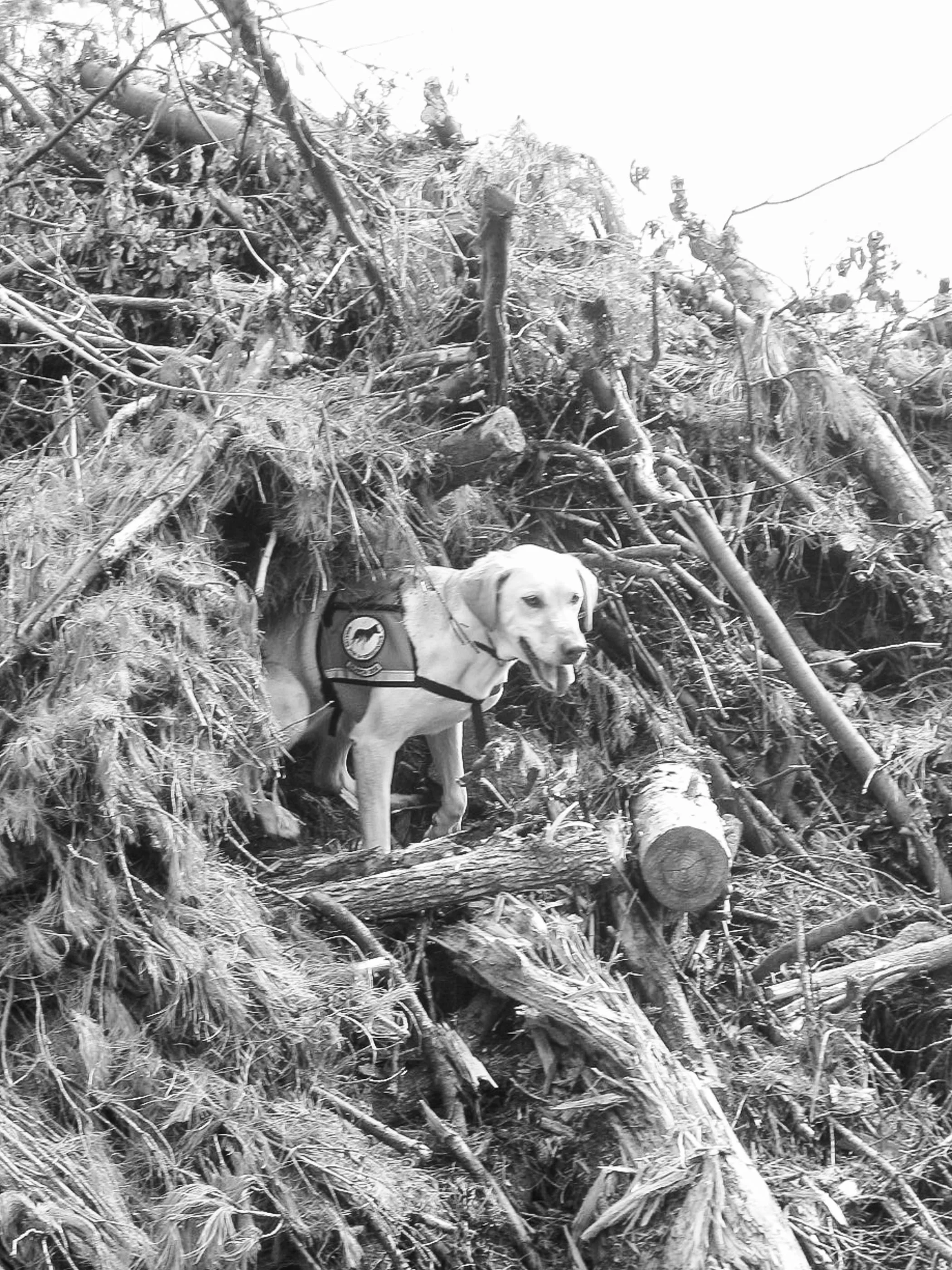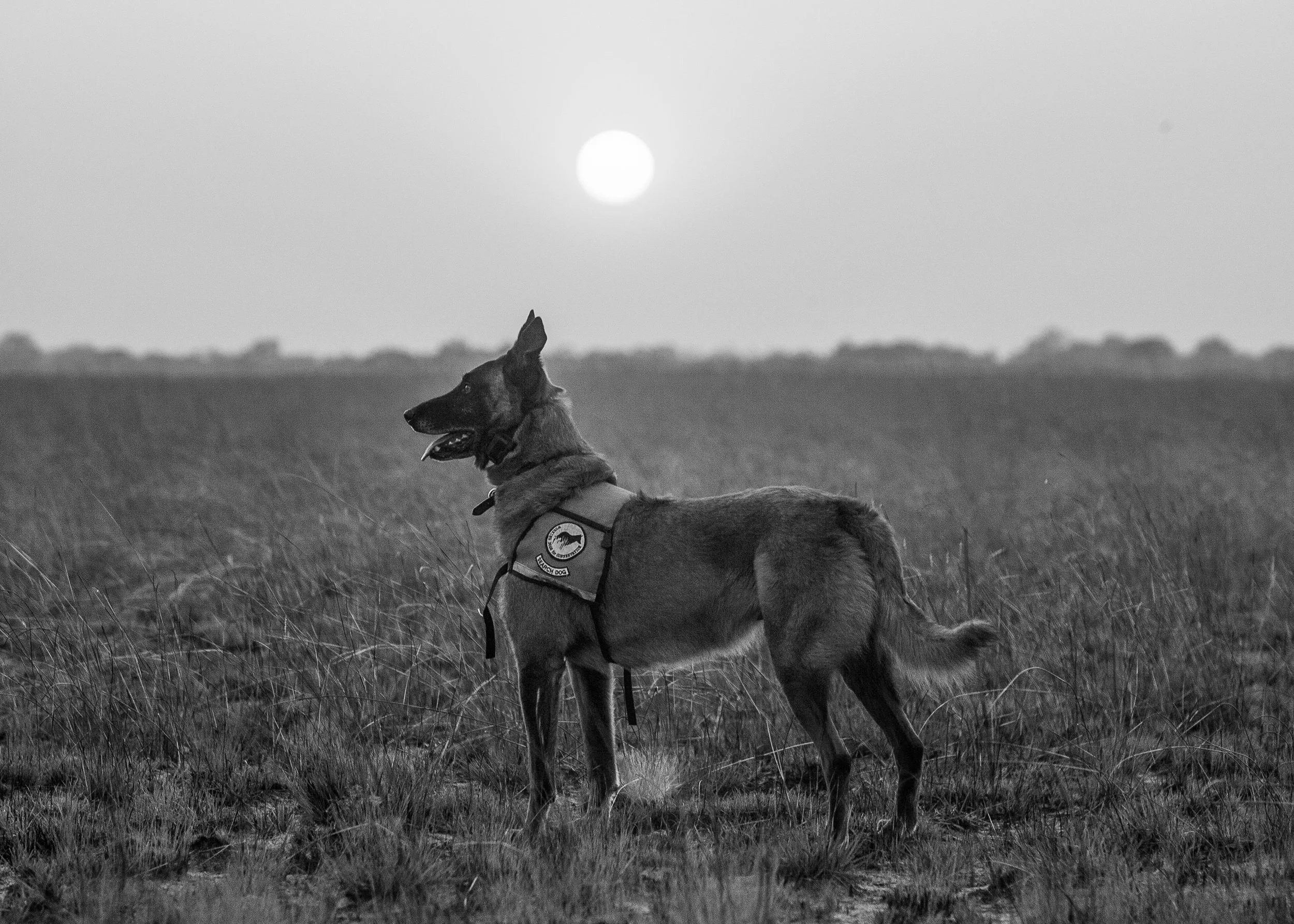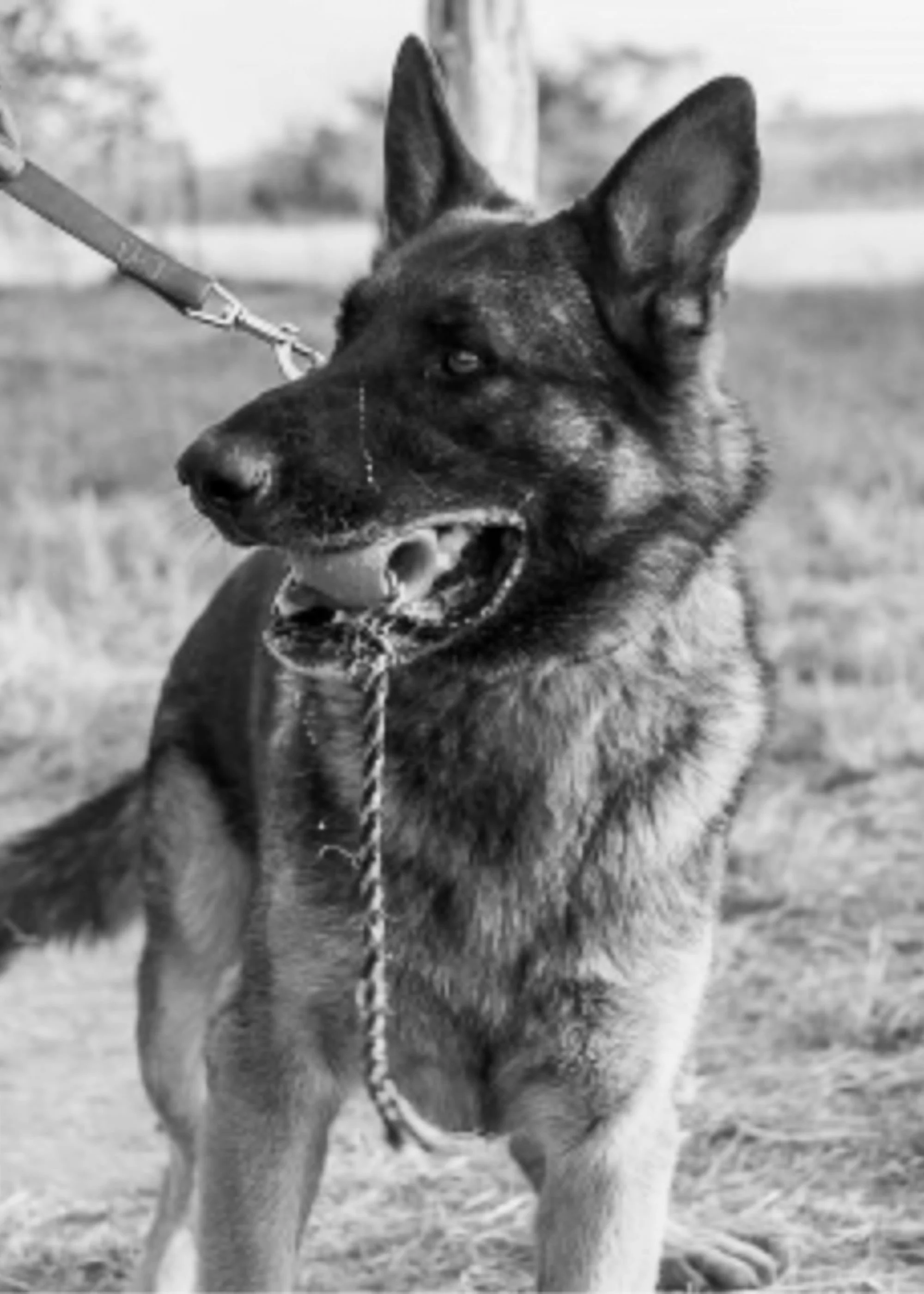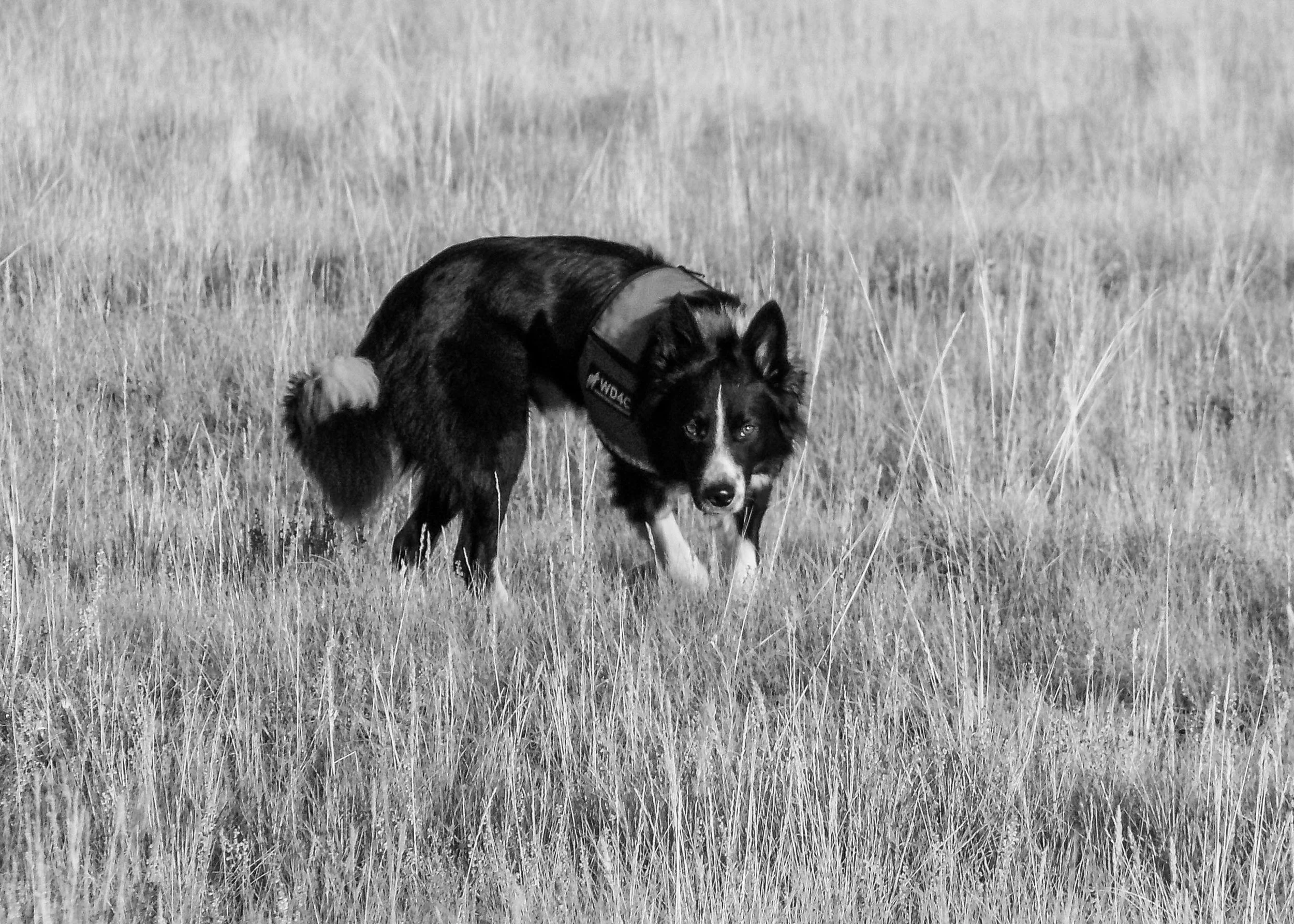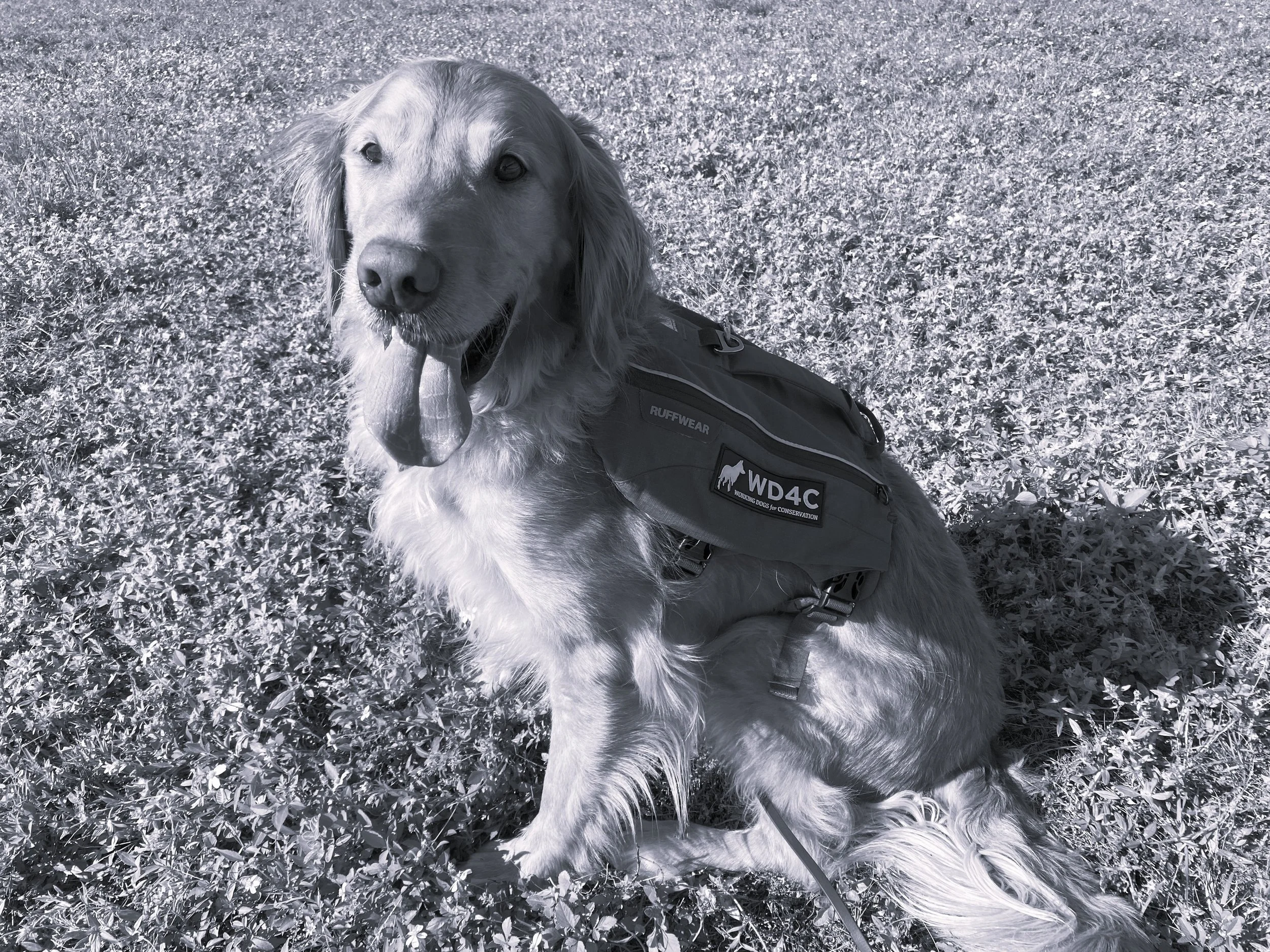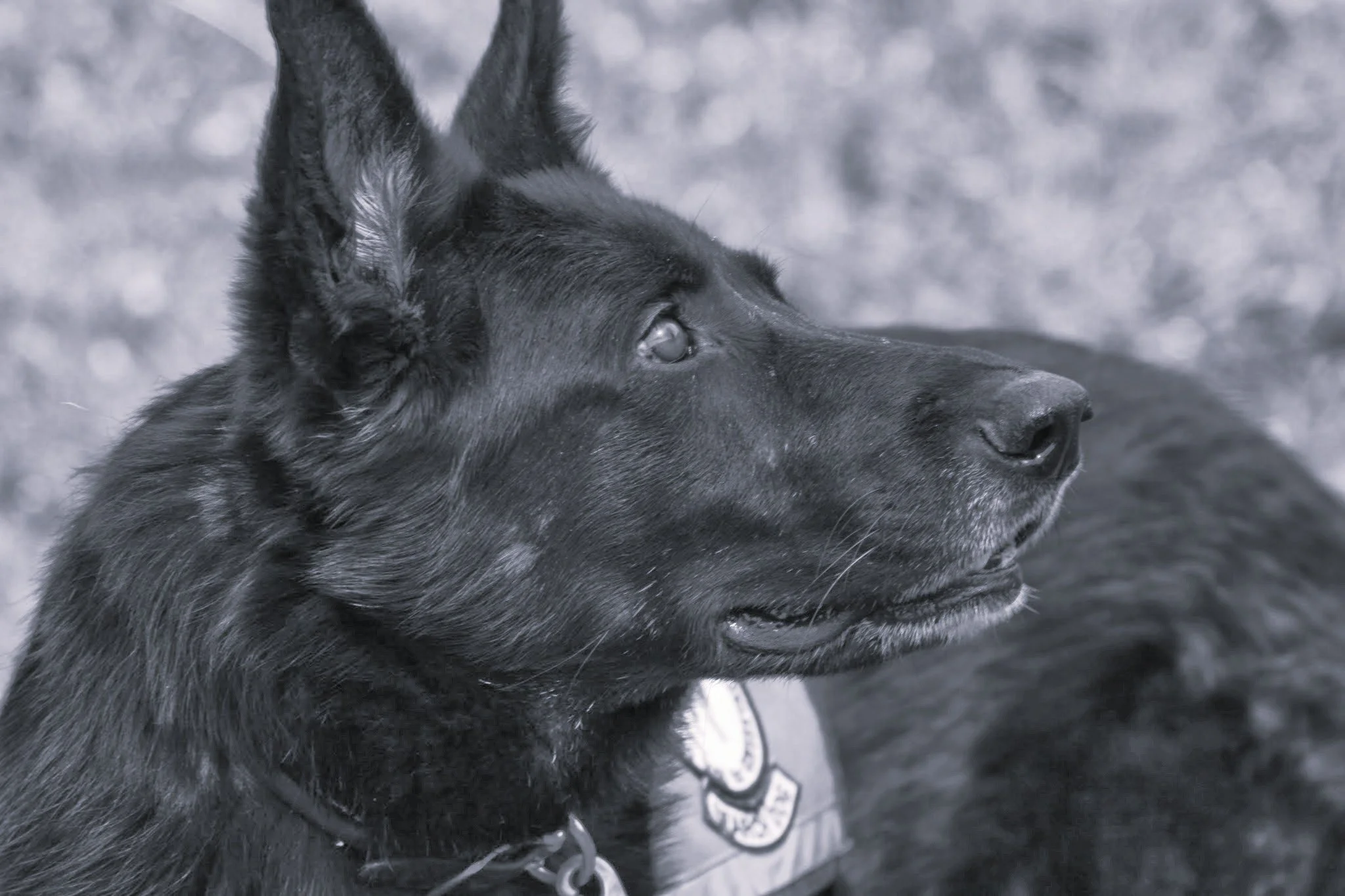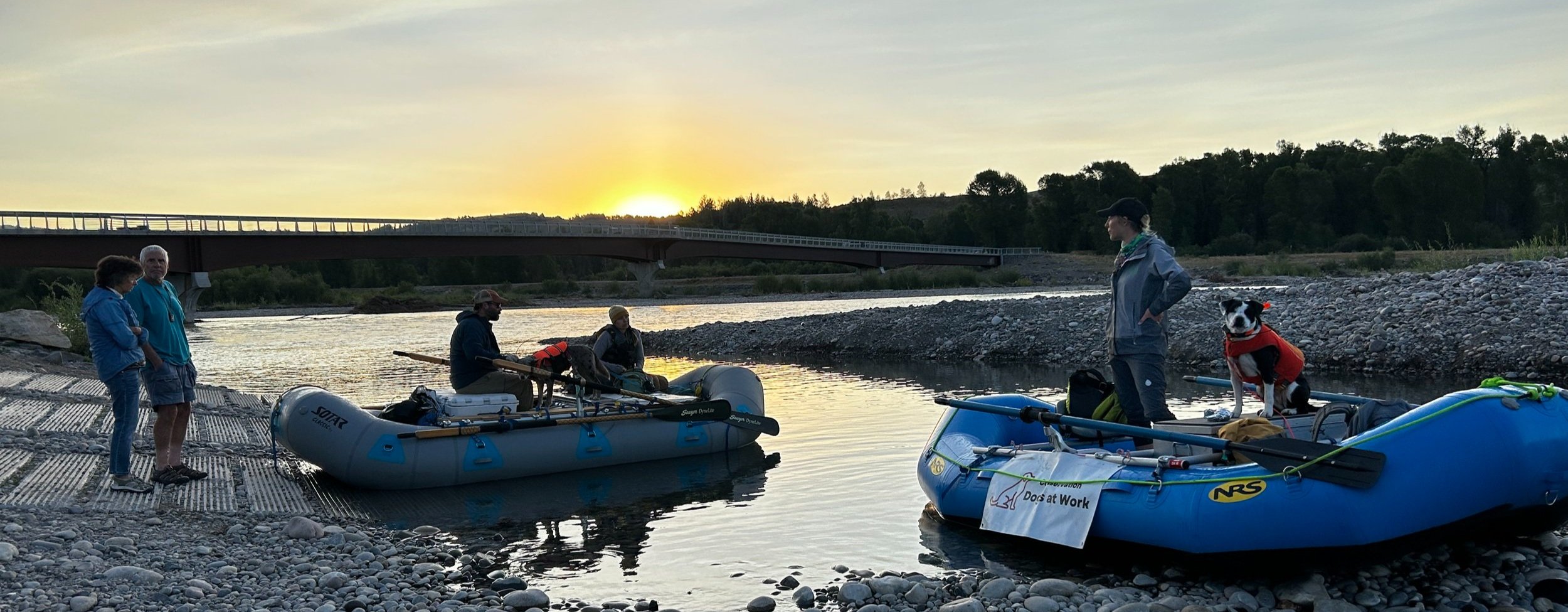
Our Dogs
OUR DOGS
Our conservation detection dogs are agile, portable, and endlessly trainable. They are an efficient, highly sensitive, and non-invasive way to gather high-quality data.
-
Our toy-loving, rescued, rehomed, and career-change dogs love their jobs. These high-energy pups have the drive and motivation necessary to become natural experts at finding the hard-to-find, from seedling invasive plants to the scat of an endangered lizard. They give us everything in the field, and we provide them with the best of care throughout their careers and through their retirement and beyond.
-
Humans have approximately 5 million scent receptors in our noses; dogs can have upwards of 220 million, which is why they can detect a single teaspoon of sugar in a million gallons of water. Where we experience the world visually, dogs perceive a detailed scentscape.
Dogs can smell continuously through their noses (not just on the inhale, as we do). They can even determine which nostril an odor arrived in first, which helps them locate a scent in space. They also have an additional olfactory organ and dedicated processing center in the brain devoted just to scenting pheromones.
-
A better question would be: what can’t dogs do? Their extraordinary abilities help us collect more and better data in the field, and their potential to find conservation targets is seemingly endless.
Depending on the project, our dogs are trained to find a specific or generalized scent, follow a scent, or discriminate between very similar scents to find something very specific. Our dogs need to learn what scent we want them to find - and that’s where the skilled and careful training of our team makes this the ultimate “game” for the dogs, fueled with toys as their reward. Once these dogs learn a new target scent (of which they can learn dozens!) - they become an unstoppable force for conservation!
Our dogs can:
• Detect plants, animals, and scat that people simply can't.
• Find targets up to 40 times faster than is possible with other methods.
• Give results instantly, with near-perfect accuracy.
• Search for multiple targets simultaneously with no reduction in efficacy.
For years scientists have been trying to develop an instrument that is as sensitive as a dog’s nose. We wish them luck. In the meantime, we’ll stick with our pack.
-
These dogs do it for the love of a ball. The rescue and career-change dogs selected for our programs have an almost relentless toy drive.
The toy is their favorite reward and and in its most simple explanation, our dogs learn that when they seek and find the specific target scent we’re looking for, great things follow.
This incredible drive for their toy motivates them to turn this “job” into the best day ever, and becomes a game for them. These dogs truly love to go to work!
MAKING A DIFFERENCE FOR DOGS
-
The Dog Life Program is the true foundation of our work. It spans every dog’s working career with WD4C, and we schedule our work (and our lives!) around their needs - it is best for their care and truly necessary for the success of our conservation work.
This includes staff time to screen new candidate dogs in shelters, transporting them to WD4C to start their careers, veterinary visits and nutrition, fitness and conditioning to keep them healthy and injury-free, and everything in between, through their retirement and even end-of-life care.
We embrace each part of this work from sleepy snuggles to organized chaos. We are unwaveringly committed to these dogs that give so much to help protect wildlife and our world.
-
We aren't breed specific and instead search for key qualities such as intense toy focus and high energy. In fact, some of the traits which often make these dogs a challenge to place in typical homes can be a remarkably good fit for a working career. We source our dogs from all over the country from shelters, breed rescues, or as "career-change" dogs from other organizations based on those qualities.
Once a dog enters our program, it can take 3-6 months for them to learn the basics of being a detection or tracking dog. Once they've completed their base training, they are then trained for whichever project needs them. And every now and then a dog decides that they just don’t want the job. When that happens we make sure that we find them an appropriate placement, which can take time, but it’s all part of our commitment to ensure that every dog in need that we touch ends up in a better state than we found them.
Adding to our pack is a long-term commitment, and each time we do it, it's a decision we take seriously.
-
Saving dogs who save the world! Learn more about our screening criteria to help find potential future conservation canines.
-
These dogs give us everything they’ve got throughout their working careers, so we make sure they get the retirement lives they want and deserve. We pay careful attention to the needs of these dogs as they age and tailor which projects they deploy on based on location and level of strenuous activity.
When it's time to fully retire, in most cases, that means adoption by their primary WD4C handler, but could also include placement into a family that's well-suited for that dog. These very special retirees still have access to the support they need with us. We anticipate and plan for the needs of these dogs, including things like additional veterinary care, aqua therapy, and chiropractic care which may be necessary as they age.
-
We are dedicated to helping find and place rescued, rehomed, and career-change dogs, even if that’s not with us. Here are some dogs we’re currently looking for foster homes and adoption placement for.
ACTIVE DOGS
It’s nearly impossible to describe the bond and level of deep care and connection we form with these incredible canine partners. We have numerous dogs in our programs including prospects, candidates in training, dogs on deployment, and retired canines - with each receiving individual and personalized loving care every day. This isn’t a complete listing, but meet just a few of the dedicated conservation dogs who are part of our pack!
LEGACY DOGS
Our legacy dogs have left an incredible impact and will always be with us in our hearts. We miss them deeply, and beyond what words can convey. Though they have passed on, their completed work continues to shape and advance conservation efforts around the world and we are forever grateful for the time we had together.
